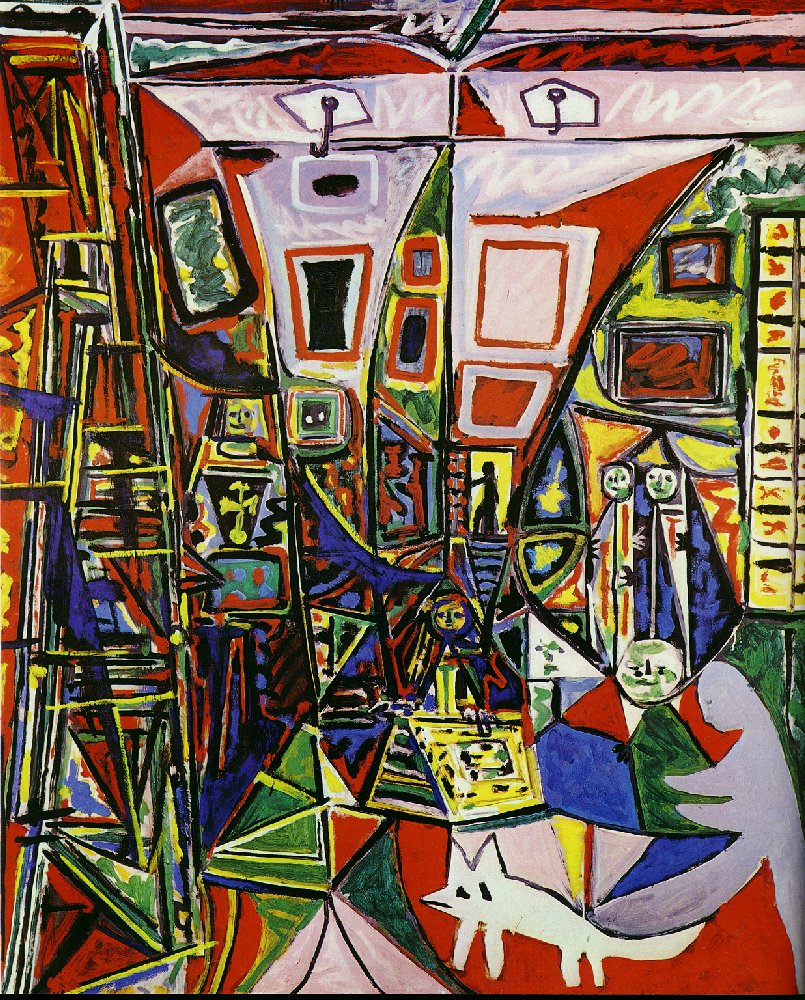|
|
Friday, September 6th, 2013

 
posted evening of September 6th, 2013: Respond
➳ More posts about Pretty Pictures
|  |
Tuesday, August 27th, 2013
My reaction to J. Sáez de Ibarra's "Las Meninas" on the first few readings was one of excitement and confusion. The first section -- "Bocetos/Sketches", which makes up the body of the story -- is gripping and interesting, but has no resolution; the second section, "Las Meninas" is just a page. It appears to be the character Juan Felipe describing the positions of all the members of the household in the photo which was soon to be taken at the end of the first section, and which is reproduced very unclearly on the facing page; under which appears a subtitle listing the figures represented, but by different names. Confusing. The key, as it took me a long time to figure out, is the "photo" -- it is a print of Diego Velázquez' painting "Las Meninas" (1656), a portrait of king Juan Felipe IV's household. The painting is the centerpiece of the story -- "Bocetos" is serving to set up the characters who appear in the painting -- which is for the purposes of the story not a 1656 painting but a photograph of a contemporary celebrity's household. Accepting all this requires some pretty twisted suspension of disbelief -- eg it is kind of difficult to accept the dwarfs Nicolás Pertusso and hydrocephalic Maria Bárbola as Juan Felipe's adolescent son and the prostitute with whom he spent the night -- and adds a new dimension to the story, completes it.
posted evening of August 27th, 2013: Respond
➳ More posts about Readings
|  |
Monday, August 26th, 2013

posted evening of August 26th, 2013: 1 response
|  |
Sunday, August 18th, 2013
Occasionally in the past I've blogged about books that I come to with no idea at all in advance, what to expect. Sáez de Ibarra's Mirar al agua is one such. I first came upon the  author's name and the title a few weeks ago when Marta Aponte recommended it. This is always a fun way to read, completely free of expectations. author's name and the title a few weeks ago when Marta Aponte recommended it. This is always a fun way to read, completely free of expectations.
The first couple of stories I've so far just skimmed the first lines of, not found much of anything to draw me in. "Las Meninas" (left) I find fascinating, a story told entirely in dialog, extremely fast-pased. I find it renders very nicely in English. "Una ventana en Via Spermazella" and the next few stories seem very interesting but have not been quite able to crack the code that will get me into the stories. Especially intriguing among these is "La PoesÃa del Objeto." Especially intriguing among these is "La PoesÃa del Objeto."
"La superstición de Narciso" is just spellbinding. More experimental than anything else thus far. "Escribir Mientras Palestina" (which I'm midway into now) is a nicely engaging piece of first-person narrative about a visit to Palestine.
posted morning of August 18th, 2013: Respond
➳ More posts about Translation
|  |
Saturday, August 10th, 2013
Looking through Mirar al agua to see what will catch my interest... I'm startled and intrigued by this story, which starts out fast-paced dialog and keeps being that with no narration for 12 pages!
posted morning of August 10th, 2013: Respond
➳ More posts about Writing Projects
|  |
Friday, August second, 2013
What I'm looking for is that the spectator, too, that he take the time to reflect. I bid him place himself before some images that demand he look at them from within. ... that he make the effort to wonder what's coming; or better, how to perceive what has come. Look, you see nothing. It's completely abstract: an image composing itself.
Juan Carlos Bracho

Sólo cerrando puertas detrás de uno se abren ventanas hacia el porvenir por JCB
posted morning of August second, 2013: 2 responses
➳ More posts about Projects
|  |
|

posted morning of August second, 2013: Respond
| |
|
Drop me a line! or, sign my Guestbook.
•
Check out Ellen's writing at Patch.com.
| |













 author's name and the title a few weeks ago when Marta Aponte recommended it. This is always a fun way to read, completely free of expectations.
author's name and the title a few weeks ago when Marta Aponte recommended it. This is always a fun way to read, completely free of expectations. Especially intriguing among these is "La PoesÃa del Objeto."
Especially intriguing among these is "La PoesÃa del Objeto."


